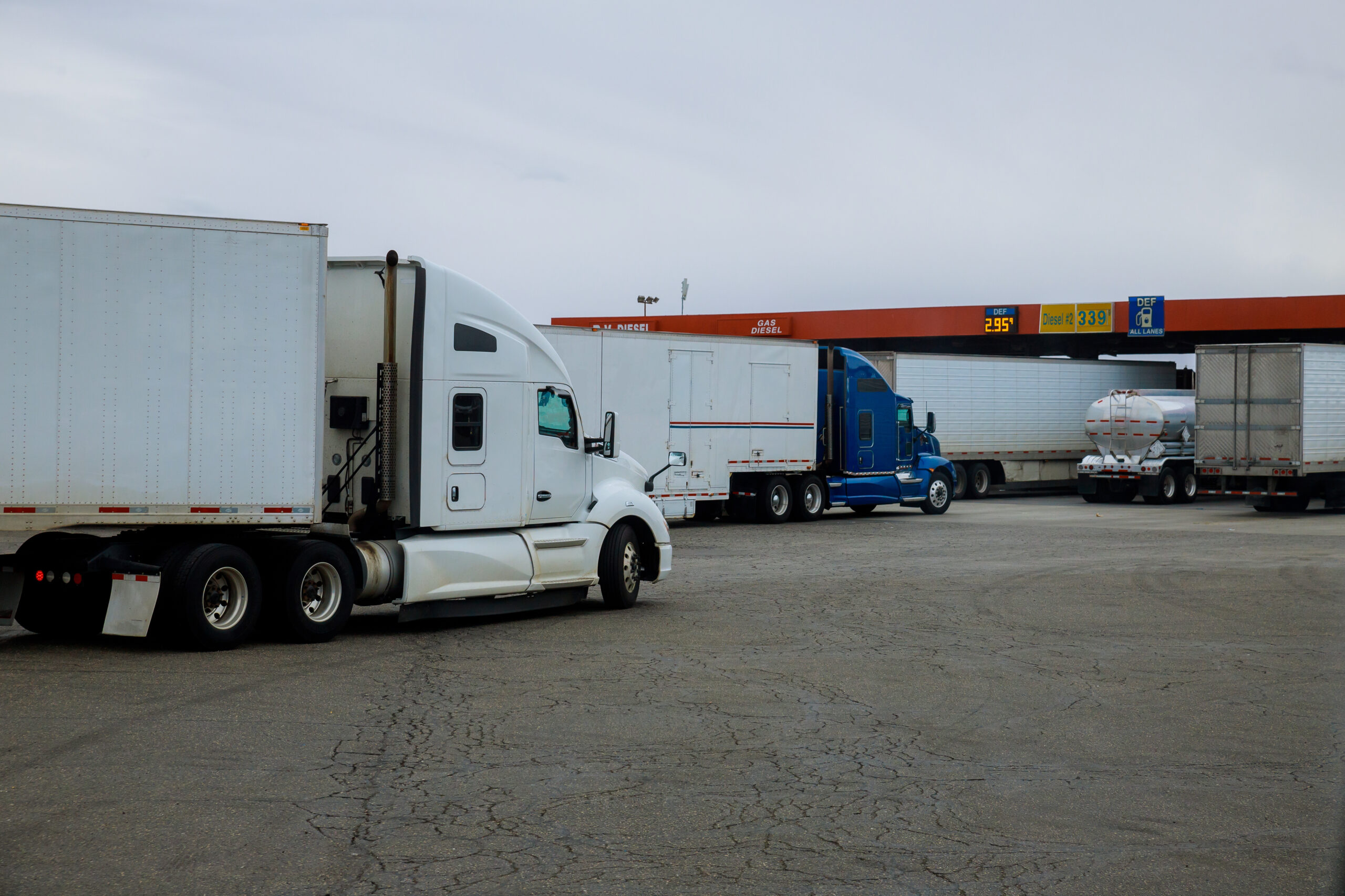
The rising cost of fuel can put a strain on any business’ budget.
And that’s especially true for fleet managers. Automotive Fleet reports that fuel can account for 60% of the running costs of a fleet. That’s why it’s important to reduce fleet fuel costs and maximize the efficiency of your vehicles.
There are strategies you can try to reduce your fleet’s fuel costs. Let’s explore how to calculate fleet fuel costs and identify potential areas for savings.
How to Calculate Fleet Fuel Costs
You have two options for calculating fleet fuel costs:
The first is to monitor the cost of fuel manually with receipts or spreadsheets, a time-consuming process that can prove difficult to manage.
Manual tracking also raises the risk of human error. For example, a driver may forget to record a transaction or lose a receipt.
Alternatively, you can use an automated solution to calculate fuel costs, like GPS tracking or an integrated vehicle management system (VMS). GPS tracking systems track a vehicle’s fuel use in dollars or gallons, offering more accurate data. Plus, these systems can monitor how efficiently your drivers are using fuel and alert you to potential problems.
9 Tips for Reducing Fleet Fuel Costs
Once you understand how to calculate fuel costs, you can implement strategies to reduce them.
Here are nine tips on how to reduce fleet fuel costs in 2023.
1. Keep up with preventative maintenance (PM).
PM, like oil changes and tune-ups, ensures maximum efficiency from each vehicle in your fleet (which will save money on fuel costs).
For instance, tuning up a vehicle can lead to an average increase of 4% in gas mileage.
Another way to improve your fleet’s fuel economy is by switching to synthetic oil, which has a lower viscosity and reduces friction in the engine. Develop a PM program to ensure your vehicles always run at peak performance.
2. Reduce idling.
A vehicle can waste up to half a gallon of fuel per hour while idling. Ensure that drivers know the importance of reducing idling time.
3. Regularly check tire pressure and keep tires properly inflated.
Proper tire pressure helps reduce drag and improves gas mileage significantly.
Under-inflated tires increase fuel consumption by up to 1% for every 10 pounds per square inch (PSI) decline in pressure.
4. Streamline routes.
Eliminate empty miles by using GPS navigation to streamline routes and reduce the miles your vehicles travel.
According to a sustainability report from digital freight network Convoy, a 1% decrease in empty miles for one truck can save over 100 gallons of fuel.
By ensuring drivers use every mile of a truck’s journey to transport cargo, you reduce the amount of fuel burned, improving your fleet’s efficiency.
Road surface quality also matters. Choose roads with smoother surfaces and fewer speed bumps to reduce the amount of fuel burned.
5. Promote safe driving.
Modifying driver behavior is one of the most cost-effective ways to reduce fuel costs.
One habit to encourage is slowing down. When you speed, fuel consumption increases because of air and tire rolling resistance. Following the speed limit improves fuel economy and reduces the risk of accidents.
Other driving behaviors that detract from fuel economy include:
- Excessive lane changes: Change lanes only when necessary.
- Fast cornering: Cornering quickly increases drag, so reduce speed when turning.
- Hard braking: Anticipate stops and reduce speed before you need to brake.
- Rapid acceleration: Accelerate gradually to reduce strain on the engine and improve fuel efficiency.
To encourage safe driving, implement an incentive program that rewards drivers who exhibit safe driving habits like obeying speed limits.
6. Take advantage of fuel card discounts.
Fuel cards can reduce the cost of fuel at participating gas stations. The Fuelman Deep Saver Fleet Card, for example, offers up to 8 cents per gallon in discounts at over 50,000 participating gas stations. Also, Coast is a Visa fleet fuel and gas card helps fleets control and track employee spending on fuel and other expenses.
Look for cards accepted by the fuel stations your drivers frequent.
These cards offer more than just discounts. They also provide an easy way to:
- Access analytics and reports: Get details on fuel purchases and identify areas for improvement.
- Reduce administrative time: Automate and reduce paperwork associated with fuel purchases.
- Track fleet purchases: Know how much drivers spend on fuel and where they purchase it.
Find cards with features like spending caps or transaction limits that prevent fuel card abuse. The BP Business Solutions Fuel Plus Program prevents misuse by allowing you to set comprehensive card controls and daily, weekly, or monthly restrictions.
Compare different fuel card providers to ensure you get the best deal.
7. Use electric vehicles (EVs) or alternative fuels.
Using EVs or alternative fuels like biodiesel can reduce fuel costs while making your business eco-friendlier.
Biodiesel is a renewable fuel sourced from animal fats, recycled cooking grease, and vegetable oils to power diesel vehicles. Not only does biodiesel reduce fuel costs, but it also helps fleets comply with the growing number of state and federal emissions regulations.
EVs, which offer high fuel economy, are becoming more popular. But the price of EV trucks might be a barrier to adoption. Some government incentives can lower the purchase price.
8. Use technology.
Use fleet management software to reduce fuel costs and track vehicle performance, allowing you to identify potential problems quickly.
Use telematics (informatics + telecommunications) with GPS tracking to monitor driver behavior. You can then provide feedback to drivers on how to reduce fuel consumption and increase efficiency through better driving habits.
9. Improve aerodynamics.
Improving aerodynamics will reduce drag and increase fuel efficiency. Although chassis fairings and wheel covers can decrease wind resistance, static devices often can’t provide the data fleet managers need to evaluate fuel economy accurately.
Active aerodynamic devices like TruckWings help fleet managers achieve considerable cost savings across large fleets. TruckWings is a telematics-enabled device that reduces drag and provides fleet managers with real-time data and analytics.
When driving speed surpasses 52 mph, the wings automatically deploy to close the space between the tractor and trailer. Bridging this gap improves fuel efficiency by lessening buffeting, turbulence, and trailer sway downstream.
When speed drops below 50 mph, the wings automatically retract to ensure maximum maneuverability and easy handling at lower speeds.
Reduce Your Fleet Fuel Costs With TruckWings
Implementing these solutions can reduce fuel consumption while improving performance and efficiency across the entire fleet.
And if you have reservations about any investments you’ll have to make upfront, consider the future savings. Advanced technologies like TruckWings can increase miles per gallon by 3% to 6% with a 12- to 18-month return on investment (ROI) amounting to millions of dollars per fleet.
From its easy installation and intuitive software platform to its dynamic data capture capabilities, TruckWings ensures a smooth transition from manual processes to innovative vehicle optimization. It’s no wonder that five of the 10 largest fleets in North America turned to TruckWings for help in reducing their fuel costs.
Start your journey toward reducing your fleet fuel costs today. Contact us for a free consultation to learn more.



